
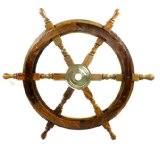
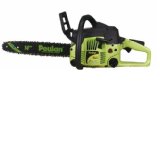
Search This Site
Search With Google
Seasoning And Moisture Content With Wood
A growing tree that is full of sap can contain anything from 50% free water up to 200%. Wood seasoning is used to accelerate the evaporation of surplus water to make the wood lighter, stronger and less susceptible to any mould attack or discolouration.
Any water within a tree is held in the fibres, pores and vessels in the form of water and moisture. When the tree has been cut these vessels and pores will begin to dry. In logs this can be an extremely slow process, but by cutting the logs in to planks the process is speeded up a bit. By cutting in to planks the water levels will fall steadily until a 30% moisture level is reached. After this the drying out slows down until an equilibrium moisture content is reached.
Relative Humidity
Even on the driest of days the atmosphere will contain water vapour which can vary from hour to hour. Water vapour in the atmosphere can be measured using a hygrometer and is termed as relative humidity. It is measured in a percentage rate. Thankfully wood is a slow conductor, so any big fluctuations in air moisture content away from the average will not have too much impact.
Equilibrium Moisture Content
Wood is an organic and hydroscopic material. It is susceptible to moisture changes in the atmosphere and will always try to put itself in a position of equilibrium with its surrounding atmosphere. Equilibrium moisture content is a measurement of how much water content the wood has in a particular humidity level.
Seasoning Methods
Seasoning is carried out to reduce wood moisture levels down to an acceptable level where the wood can be used to best effect. Seasoning wants to be done quickly, yet gently. Once the pores of wood are emptied of water, the fibres are dried by surface evaporation and capillary action. If evaporation is too quick the result will be vacuums being created and the cell walls collapsing. This will cause splitting and distortion. If the drying rate is controlled any water loss in the wood will be replaced by air and any strains on the wood from moisture loss will be accommodated by the natural elasticity and strength of the wood.
The 2 methods of seasoning used these days are air drying and kiln drying. Air drying is slower yet cheaper to perform. Kiln drying is quicker and simpler but much more expensive to perform. Air drying can never reduce the moisture content of wood to much below 15%. For lower levels than that, kiln drying is the only option.
Air Drying
When hardwoods are sawn they should be piled for drying when the humidity levels are high. With green wood they should never be piled without air spaces between them or mold and fungi will intrude. When you stack wood the stack should be built up on concrete piers and then weighted down at the top with wood slabbing. A lean too roof over the stack will protect it from any rain and sunshine. Rain will not be too harmful to your wood stack as long as it has the ability to dry out but sun could be an issue, especially with the ends of wood. You have to expect some splitting on the ends of wood as the moisture is driven out. A special paint can be used to limit this splitting.The drying time of wood with air drying to reduce moisture content from 25% to 15% is about a year for every inch of thickness in the wood.
Kiln Drying
Using hot air for seasoning wood does require a lot of knowledge. For kiln drying the wood is stacked the same way as with air drying, but in enclosed compartments. Hot air is then passed through these compartments. Because hot air would cause rapid evaporation of moisture and cause severe distortion and shrinkage, steam is also put in to the compartment to keep the evaporation at a suitable level. The job requires constant attention as the amount of heat and level of humidity in the compartment has to be adjusted to create a progressive fall in the relative humidity percentage. This has to be continually monitored until the required moisture content level in the wood has be obtained. The advantages of kiln use are that wood can be dried down in just a couple of weeks and lower moisture content levels can be achieved. A disadvantage is that there is an increased risk of the wood warping or buckling.
Suitable Moisture Level Contents
In order to avoid excessive shrinkage, the maximum moisture levels below should be adhered to.
22 -
20% The dry rot safety line
16% For outdoor furniture
15% For new joiners work
12 -
11 -
9 -
8% For radiator shelves and such like items.
Measuring Moisture
The most accurate way of measuring moisture content is the oven method. Here wood
is weighed and heated in a drying chamber and then re-
The moisture meter is the second way of measuring moisture content and give instant and accurate measurements. These meters work on the principle that, as wood itself is a bad conductor of electricity, any moisture present will facilitate the passage of an electrical current passing between two electrodes spaced apart and inserted into the wood, and the measure of resistance to the passage of the current can be expressed in terms of moisture present as a percentage of the total bulk.
The range of measurement varies according to the type of meter, with a normal coverage of from 6 to 30 per cent, and a margin of error of from 1 to 2 per cent. It should be borne in mind. however, that the presence of mineral salts in the wood may affect the readings, while some woods give large errors, especially in the upper moisture range; but most manufacturers give a table of adjustments covering many of the commonly used woods.
In taking any measurement, whether by oven method or moisture-
Moisture Meter Guide 2010 Contact details:garnett65@hotmail.com
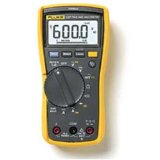

The complete moisture meter website
Moisture Meter Guide
Wagner Moisture Meters
General Tools MMD5NP Pinless LCD
General Tools MMD7003 Precision
General Tools MMD8P Multi Species
General Tools MM700D Precision
Boat Moisture Meter
A moisture meter proves itself to be a useful tool when testing the moisture content levels of boat materials. When assessing a boat, care, judgement and experience should all be employed and then the moisture meter used as the last tool to give the final assessment. Boat moisture meter
Need A Chainsaw For Firewood?
The petrol chainsaw is used to fell trees, as well as for pruning and cutting overgrowth. Tree surgeons favour the petrol chainsaw and use it for cutting away branches and foliage. Petrol chainsaw
Orchid Moisture Meter
The orchid belongs to a widespread and very diverse family of flowering plants which have fragrant and colourful blooms. Orchids can be found in pretty much every habitat. Orchid moisture meter
Caravan Moisture Meter
Any caravan that is kept open to the elements all year round can become very susceptible to damp and damp related problems if proper precautions are not taken to prevent this. Caravan moisture meter
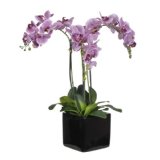
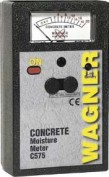
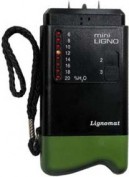
Garden Moisture Meter
The garden moisture meter helps any avid gardener to measure and monitor many different conditions to ensure that they can maintain healthy growing conditions for both indoor as well as outdoor plants. In order to have healthy thriving plants Garden moisture meter

| Tramex Moisture Encounter Plus |
| Tramex Compact Wood Moisture Meter |
| Tramex Concrete Encounter Moisture Meter |
| Tramex Skipper Plus Moisture Meter |
| Tramex Roof And Wall Moisture Scanner |
| Sonin Digital Moisture Meter model 50218 |
| Sonin Digital Moisture Meter 270 model 50270 |
| Sonin Moisture Test Tool model 50210 |
| Sonin Moisture Test Meter Model 50211 |
| Oak |
| Douglas Fir |
| Beech Tree |
| Elm Tree |
| Hickory Tree |
| Maple Tree |
| Pine Tree |
| Prevent And Repair Gaps In Wooden Floorboards |
| How To Fix A Squeaky Hardwood Floor |
| How To Repair A Hardwood Floor That Has Buckled |
| Which Is The Best Firewood? |
| Concrete |
| Concrete Moisture |
| Screed Moisture Meter |
| SDS Drill |
| Belle Cement Mixer |
| SDS Drill Advice |
| Which SDS Drill |
| SDS Drill Accessories |
| Drilling Into Concrete |
| Kennedy Tool Box |
| Moisture - Basic Facts |
| Types Of Damp |
| Wet Rot |
| Dry Rot |
| Mold |
| Water Leak Detection |
| Stucco Moisture |
| Water Damage |
| Moisture And Rust |
| Moisture Damage To A Chimney |
| Wallpaper Stripper |
| Plaster Mixer |
| Why Worry About Moisture Problems |
| Does Your Home Have A Moisture Problem? |
| How To Solve Moisture Problems |
| How To Use Anti Mold Paint |
| Rising Damp |
| Condensation |
| Salt Damp |
| How To Avoid Bathroom Condensation |
| How To Remove Black Mold |
| How To Prevent Bathroom Mold |
| Soldering Kit |
| Soldering Kit Contents |
| Soldering Kit Advice |
| Bonsai Tree Classification |
| Growing Bonsai From Seed |
| Bonsai Tree Care |
| Bonsai Tree Training |
| Bonsai Tools |
| Displaying Bonsai |
| Bonsai Calendar |
| Bonsai Plants |
| The Thirsty Light Curve Moisture Meter |
| The Thirsty Light Ladybird Moisture Meter |
| The Thirsty Light Bumble Bee Moisture Meter |
| The Thirsty Light Butterfly Moisture Meter |
| Hanna Instruments |
| Agratronix Portable Coffee Moisture Tester |
| Lawn Aerator |
| Lawn Roller |
| Lawn Rake |
| Lawn Sand |
| Chainshot |
| Chainsaw Gloves |
| Chainsaw Trousers |
| Chainsaw Boots |
| Mac 4 - 20 XT Chainsaw |
| Mac 738 Chainsaw |
| Mac 842 Chainsaw |
| Mac 20X Power Chainsaw |
| Einhell BG-PC 3735 Chainsaw |
| Einhell BG-PC 4040 Chainsaw |
| Einhell BG-PC 5045 Chainsaw |
| Poulan P3314 Chainsaw |
| Poulan P4018 Chainsaw |
| Poulan Pro PP3816AV Chainsaw |
| Poulan Pro PP4218AVX Chainsaw |
| Poulan Pro PP4620AVX Chainsaw |
| Efco MT 4100 SP Chainsaw |
| Efco MT 3500 Chainsaw |
| Efco 132 S Chainsaw |
| Efco 147 Chainsaw |
| Efco 152 Chainsaw |
| Efco MT 7200 Chainsaw |
| Efco MT 8200 Chainsaw |
| Efco MT 3750 Chainsaw |
| Methods Of Obtaining Soil Moisture Levels |
| Hygrometer |
| Psychrometer |
| Rain Gauge |
| Wave Ventilation System |
| Humidity |
| Hygrometer For Keeping Reptiles |
| Humidor |
| Weather Stations |
| Musical Instrument Storage |